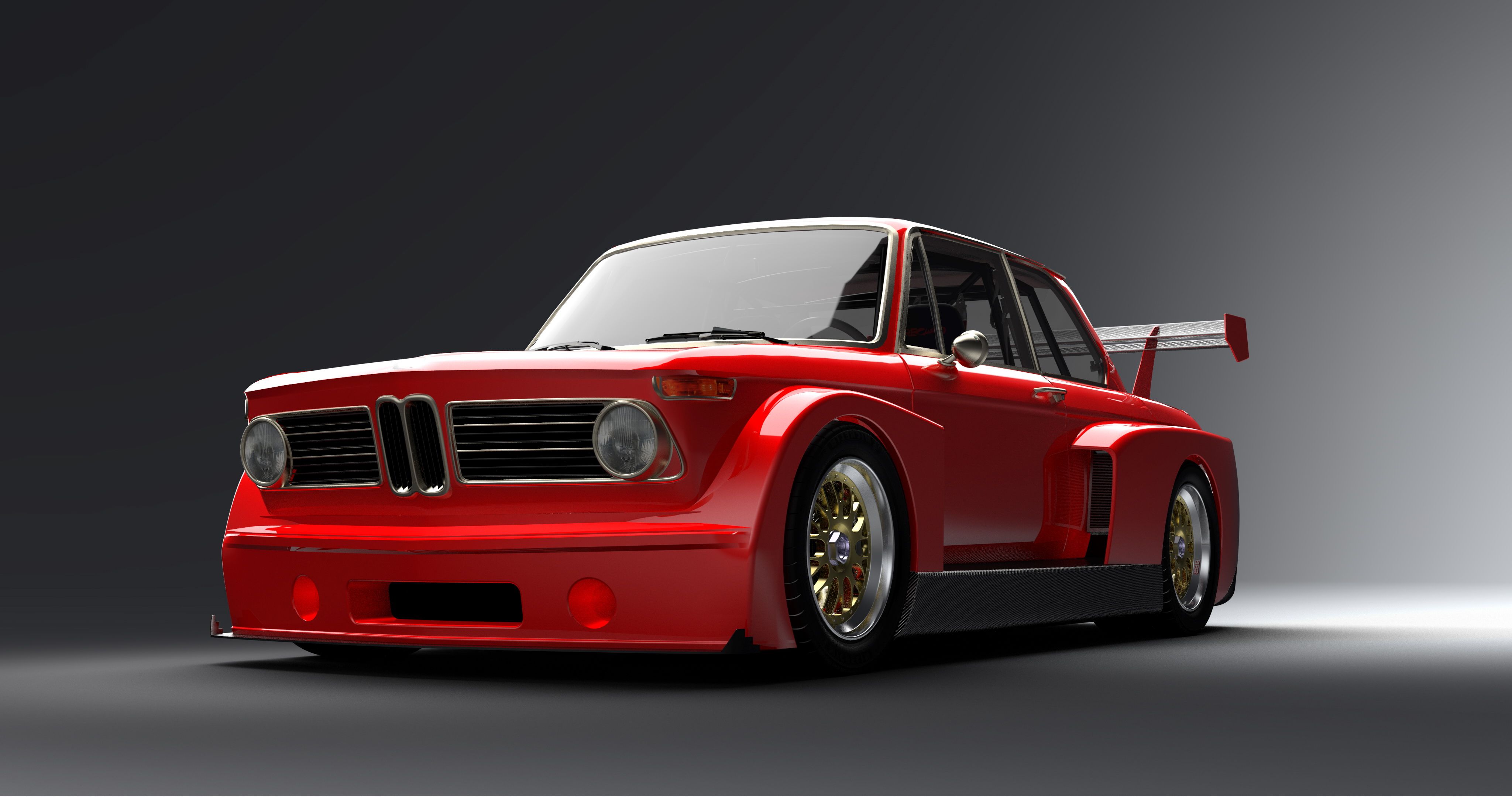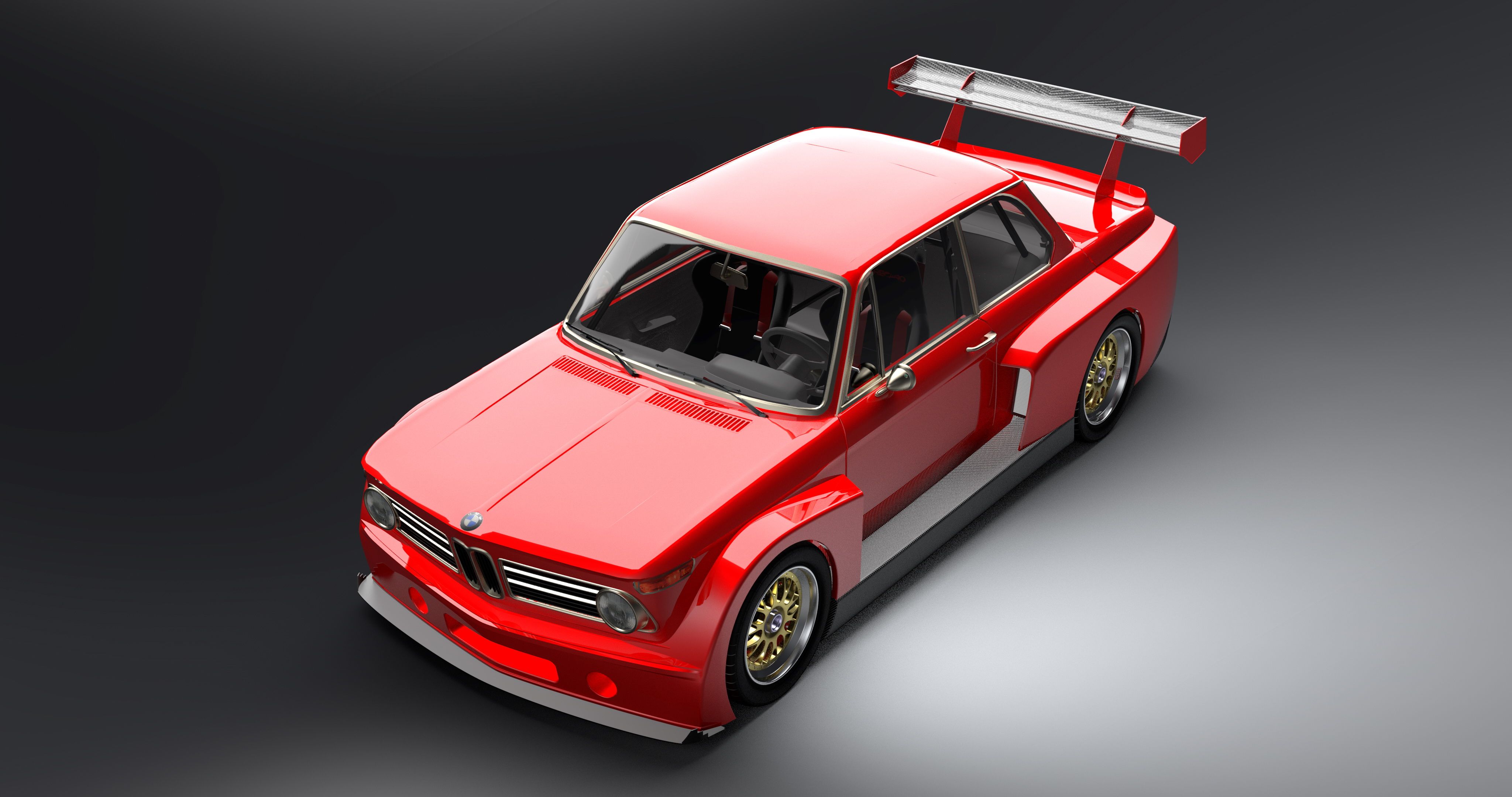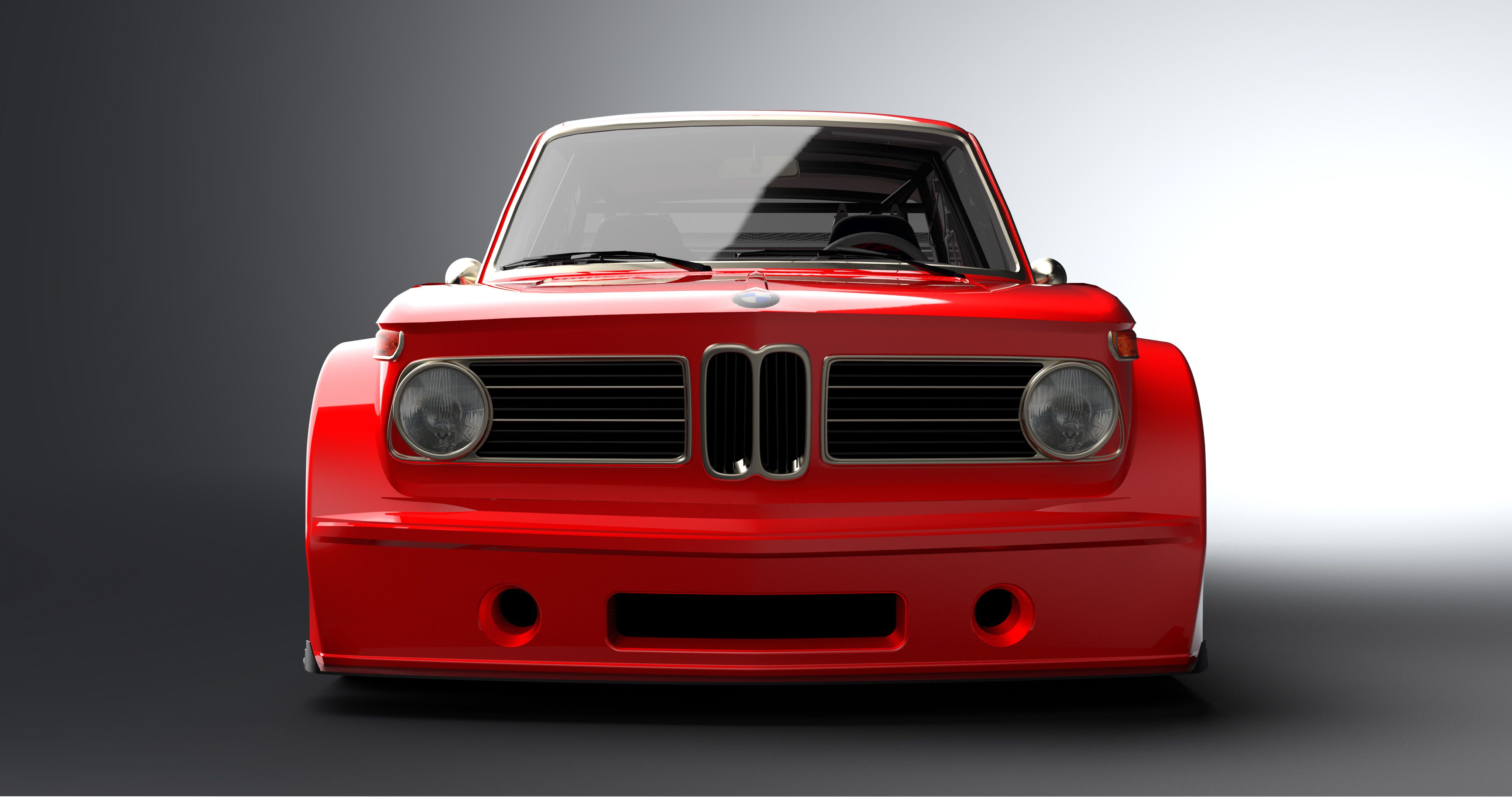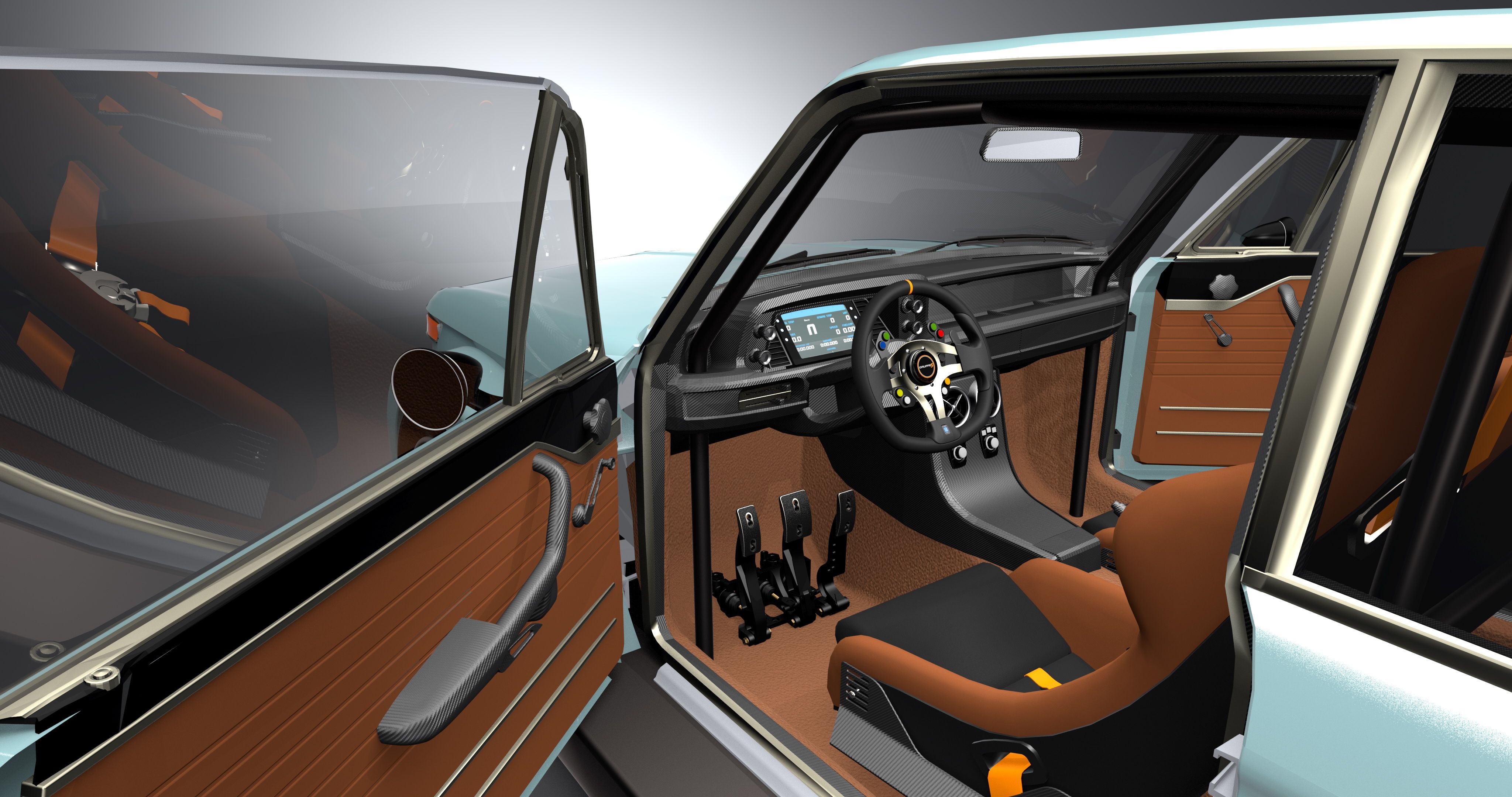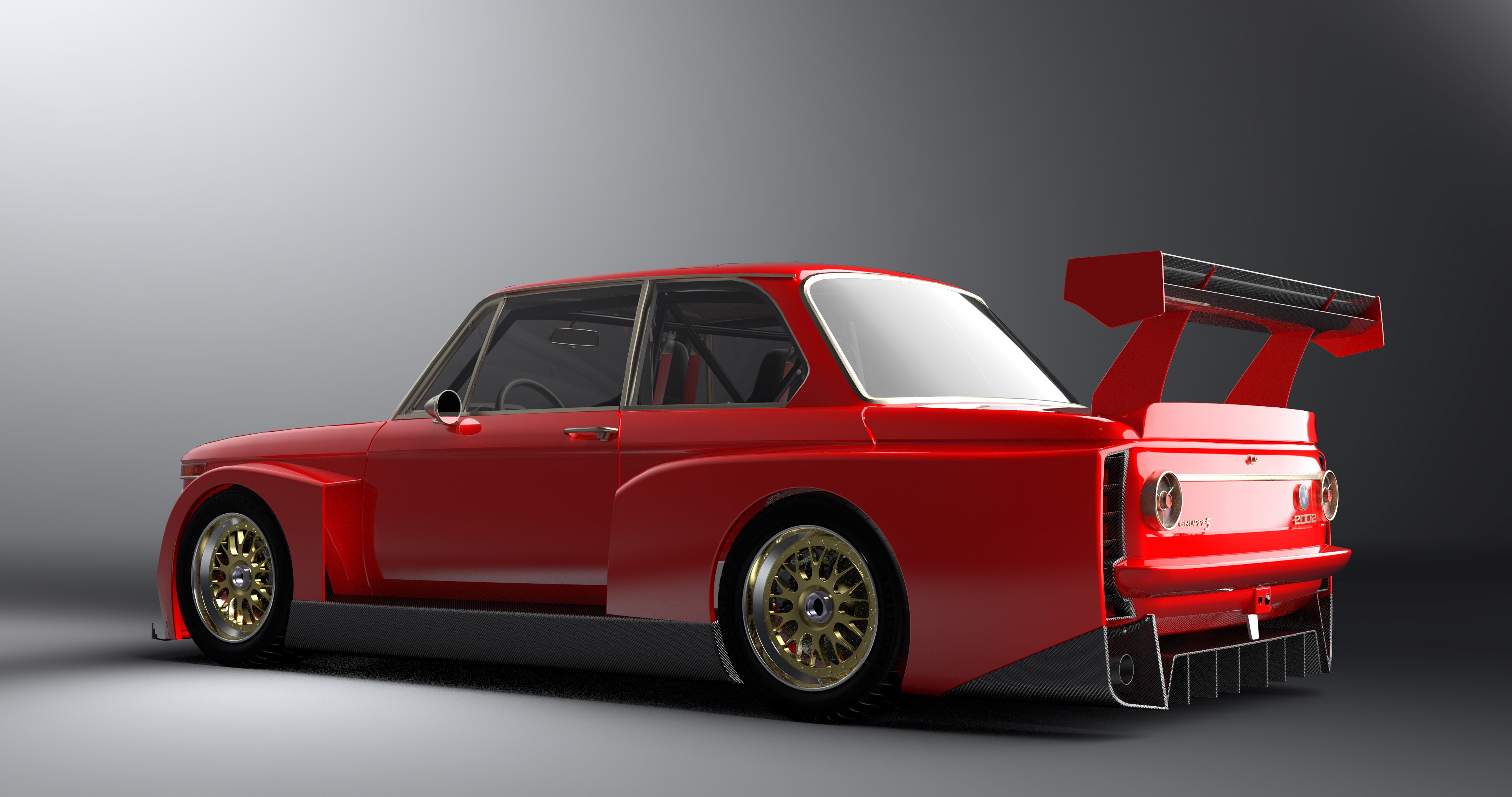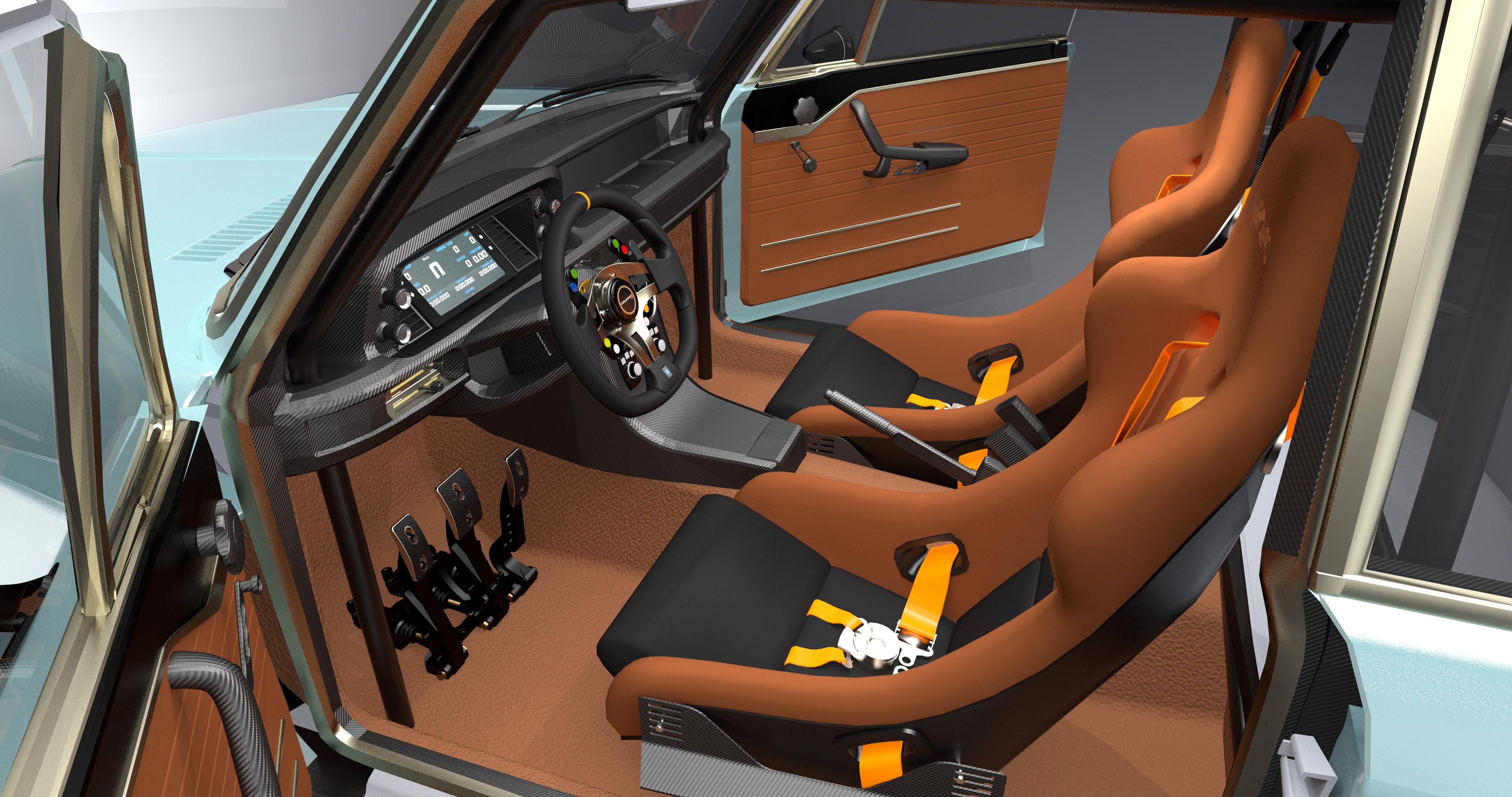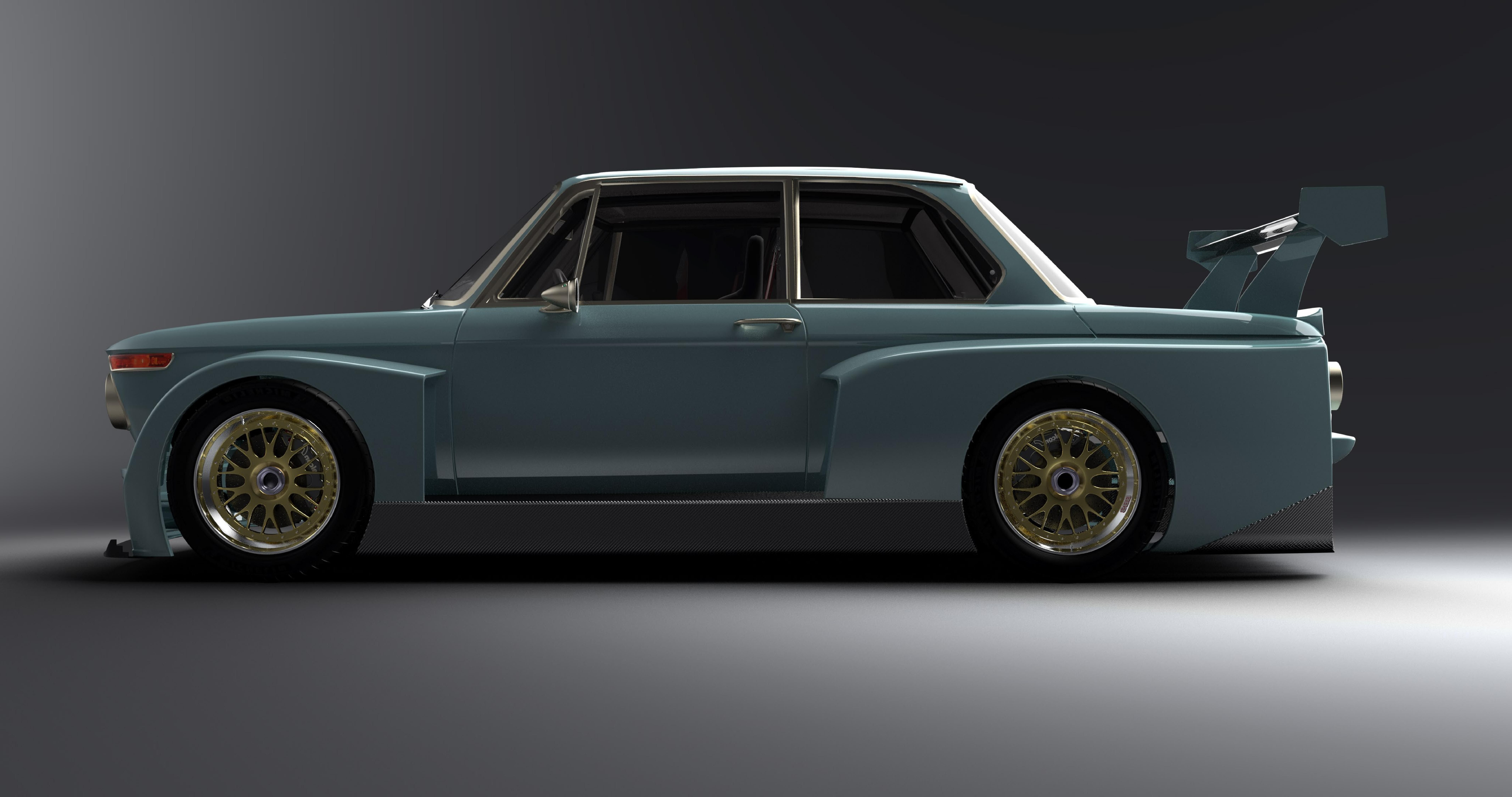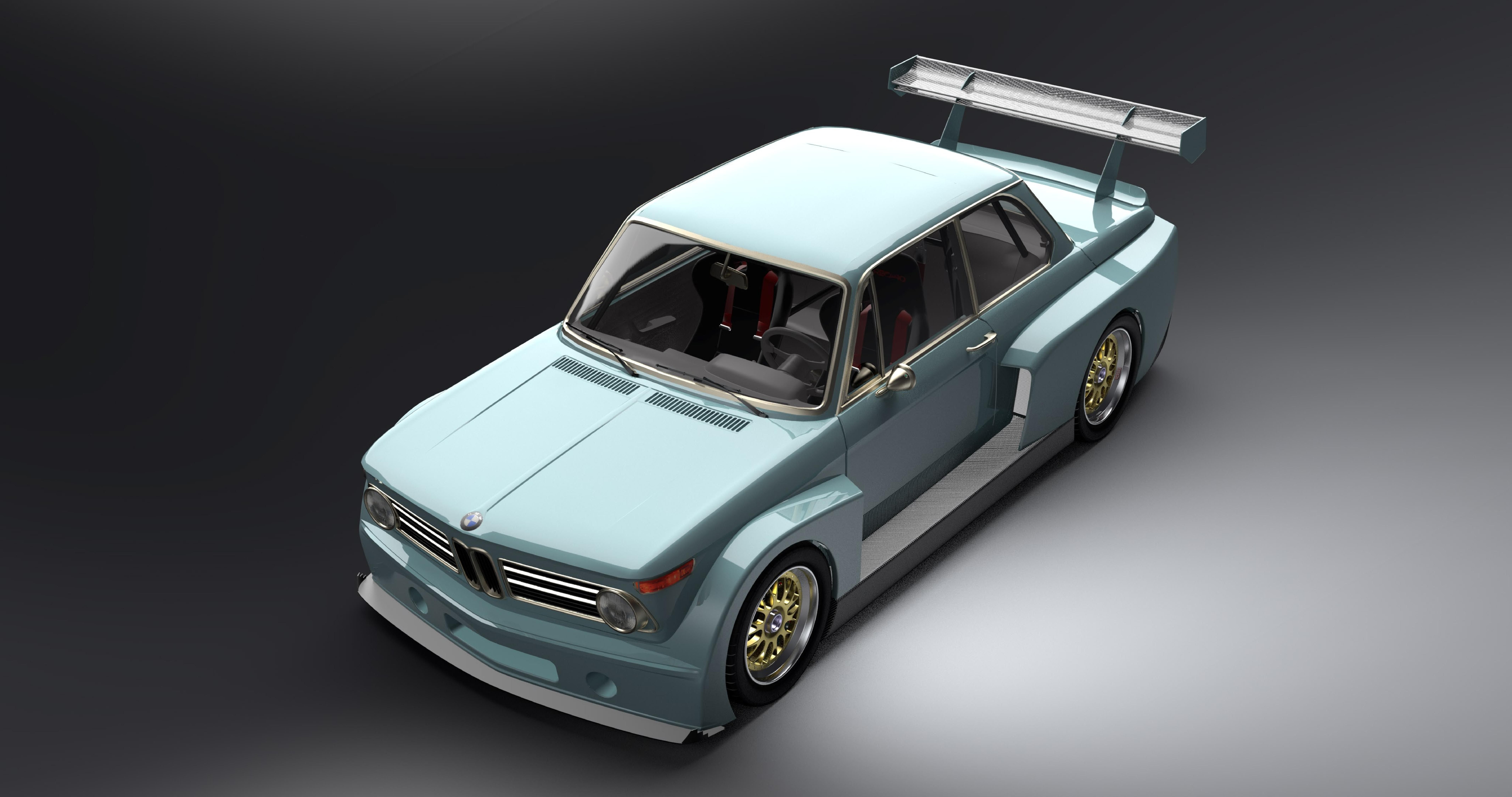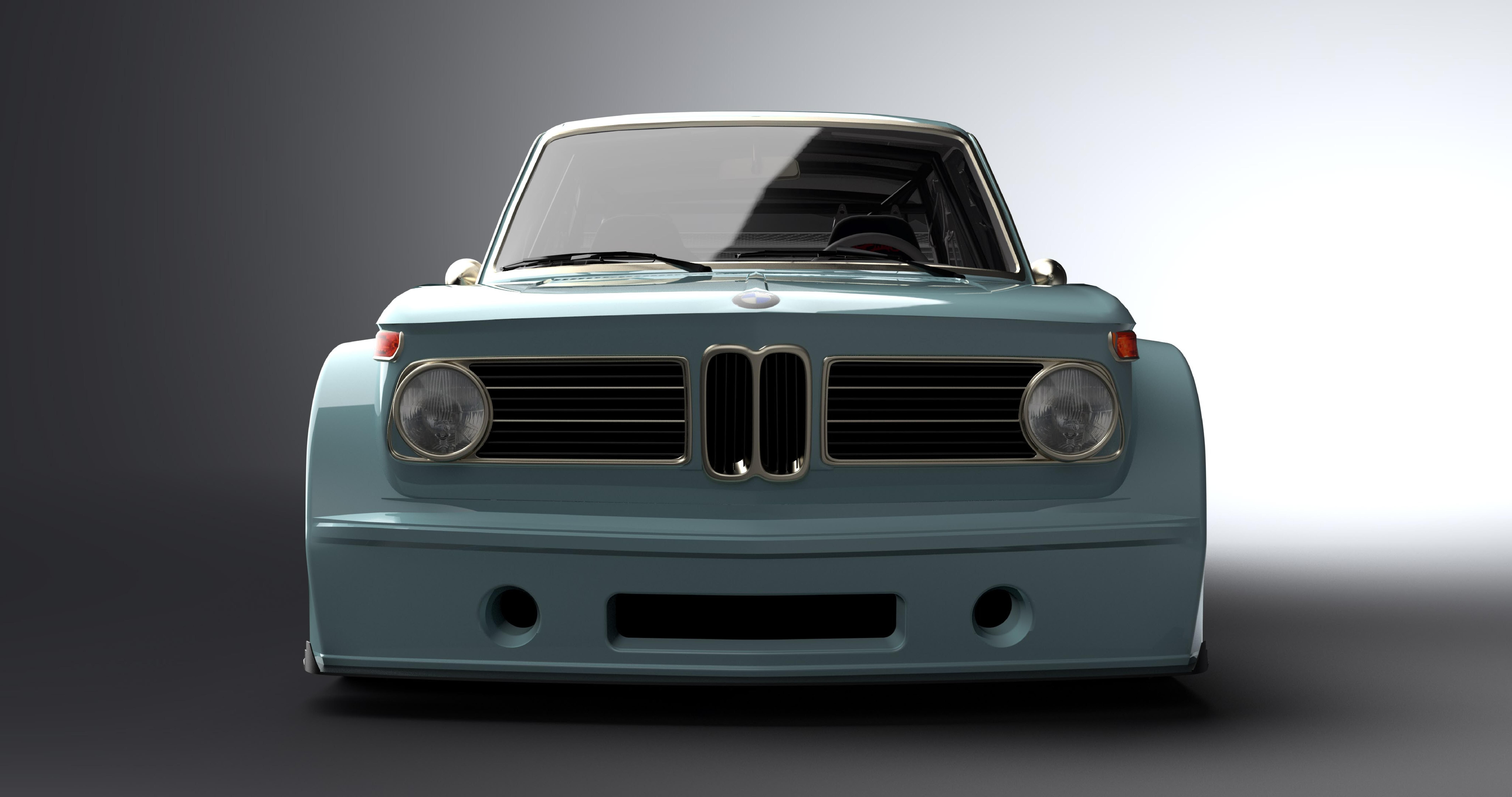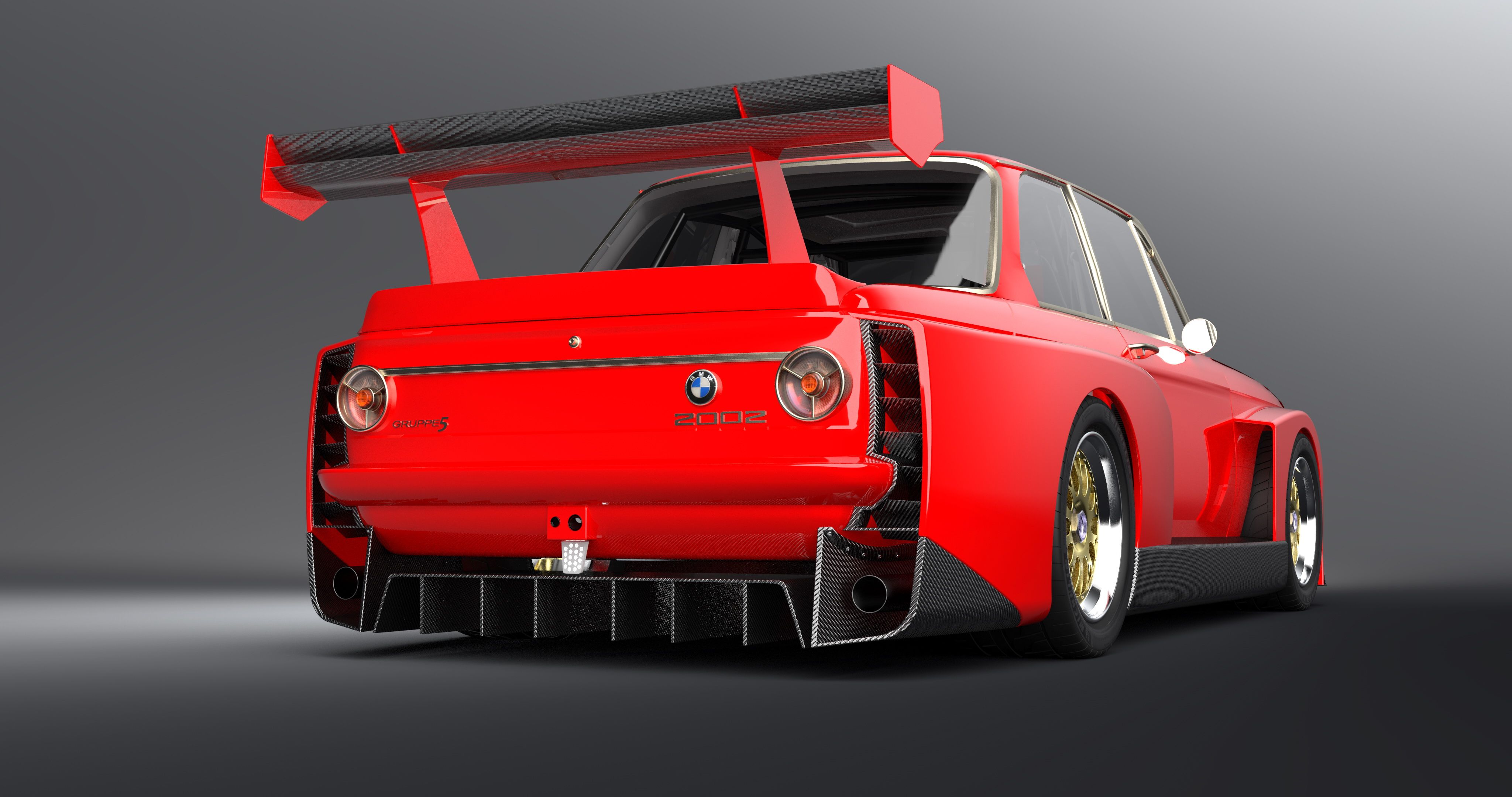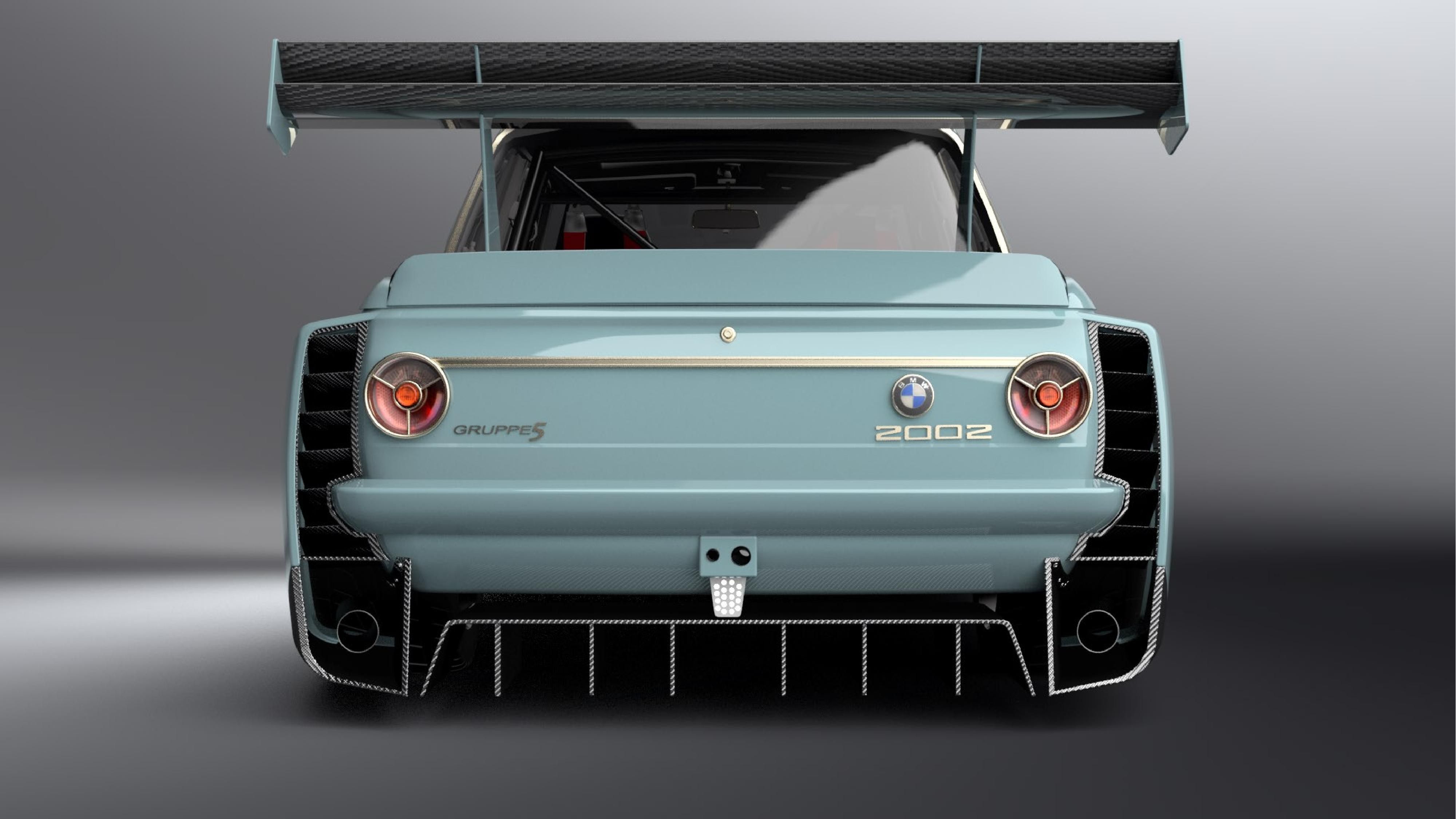When you bring together one the best BMW engine builders and tuners with one of the best chassis and body designers of the last few decades, you're bound to get an amazing product. Take it a step further, and task them with re-imagining BMW's diminutive two-door hit of the late '60s and early '70s, the 2002, into a bona fide racer with a Group 5-inspired body kit and as much power as a McLaren 650S. You'll end up with something like the Gruppe5 2002, a $1 million, flared pocket rocket that you didn't know you wanted.
Actually; a carbon fiber body with boxy arches and an enormous rear wing that acts as a cage for a 744 horsepower V-10. That's what you get, plus a lot more, if you wire $875,000 to Gruppe5's account. Add $100,000 more, and you'll get 803 horsepower from a bigger version of that same V-10. The catch is that Gruppe5 only plans to build 300 of these bonkers 2002s, 200 with the 744 horsepower engine and 100 with the 803 horsepower unit installed in front of the cabin. When will the renders you see turn into a running and driving car? Pretty soon since Bill and Bob Riley, two of the co-founders of the project as well as the driving power behind Riley Automotive will get cracking after Bob returns from the 24 Hours of Le Mans in June. Now, if the name Riley rings any bells, I bet you now understand why this thing will cost as much as two Ferrari 812 Superfasts brimming with options. Oh, and that engine guy is none other than Steve Dinan, the founder of Dinan Cars and reputable Daytona Prototype-era engine builder.
It's too much money, right? You should just pick a Singer instead, right?
As I was browsing through web articles about this project, I stumbled upon dozens of people bashing this car. Be it the price tag, the looks, or the fact that we're talking merely about a render at this time; people found plenty of off-putting things about this creation.
Take, for instance, Singer's Dynamics and Lightweighting Study project co-engineered with Willaims Advanced Engineering and with key input from former Porsche engineer and designer Norbert Singer (the man that inspired the name of the Singer company) as well as engine specialist Hans Mezger.
The history of the 2002
Before we delve into the details of this creation, it's worth highlighting the history of the 2002 to understand why it was picked as the base for this project. After all, Dinan and Riley could've just picked up an E21-generation model, the 2002's replacement which also has genuine Group 5 pedigree since it was raced in that category in the late '70s as a stop gap before the M1 finally arrived in 1981.
The BMW CS series could also be deemed suitable as the 'Batmobile' was based on a 2800 CS and, as such, the turbocharged 3.0 CSL, the winged warrior of 1976 that proudly wore the evocative checkered pattern drawn by Frank Stella was also an offspring of the BMW CS, and you already know some people did build a throwback E9 inspired by the Group 5 monsters that raced in 1976 as well as their North-American counterparts that competed in the less extreme GTO category of the IMSA GT Championship.
So, let's continue the story.
Even before the 2000C and the 2000CS were introduced at once in 1965, BMW engineers started thinking about the necessity of a more compact model, a model that was absent from BMW's lineup at the time. A smaller version of the 1500 would have to have only two doors and would also help reestablish BMW as a brand with genuine sporting aspirations that basically vanished immediately after World War II since BMW only offered bulky limousines that were as fast as smaller glaciers.
All the ideas that were brewing in the heads of Fritz Fiedler (the head of the New Class project), Wilhelm Hofmeister (who was in charge of the body and the design), and Alex von Frankenhausen (engine builder par excellence) soon found their way onto the drawing board where Hofmeister penned a two-door, three-box coupe with a shorter wheelbase (down from 100.4 inches to 98.4 inches in the end) and a slightly restyled roofline and front end. In 1966, the car was announced christened as the 1600-2 due to the presence of the same 1.6-liter engine under the hood as employed by the sedans.
The press immediately compared the 1600-2 and, especially, 1967's 1600ti with Alfa Romeo's Alfa Romeo 105/115 Series coupes like the GT 1300 Junior and the Giulia Veloce.
Their plea was backed by legendary U.S. BMW (among many others) importer Max Hoffman who noticed how popular the 1600-2 was with the American customers and urged Munich to up the ante and offer a bigger engine for a zippier ride. The 1600ti version, though, never made it Stateside due to the stricter U.S. emissions regulations and, as such, BMW decided to use the 2-liter engine in the 2000 Coupe. According to BMW2002.co.uk, "BMW Sales Director Paul Hahnemann was well aware of the requirements of the American market, and so he supported the proposal for a 2-liter version of the two-door car, despite opposition the sales argument won the day, and the 2002 was born."
Then, in 1973, Europe got its first production turbocharged car.
Group 5 madness scaled down
A number of tuners raced Group 2 2002s including Schnitzer, GS-Tuning, and Alpina but none of them could extract as much oomph from the naturally aspirated two-liter engines as Ford Cologne did from the Escort's Cosworth BDA inline-four. The 1.8-liter DOHC unit put out 263 horsepower while BMW drivers racing in the same category had to work with something like 220 to 226 horsepower. Granted, things got even by 1974 when the already widebodied (but still Group 2-spec) 2002s raced around with 272-280 horsepower on tap, about as much as the Zakspeed-developed Escorts with the now 2.0-liter BDA engines.
However, the Ford was still the car to beat as Hans Heyer manage to win the ETCC title overall in 1974 ahead of all of the competitors in the top division because the rules favored the consistent class winners, and in the top class Ford battled with BMW intensively and almost shared the wins in an even way while Heyer took home most of the wins in his class. A similar system was up in the BSCC (British Saloon Car Championship) at the time which meant Bill McGovern with his Bevan Sunbeam Imp could rack up a few consecutive driver's titles although he never drove anything with an engine big enough to compete in the top category usually filled by American "Muzzies" and "'Maros".
The 2.0-liter category (later allowing only cars with an engine capacity below 1.7-liters) was the baby category of the Group 5 class. Norbert Neumann and Joerg Denzel finished 13th overall and in the process were first in their class, not that big of a feat when you think that the only other finisher in the class was another 2002tii, only one that had lapped the 'Green Hell' in practice some 40 seconds slower. Still, Schnitzer and Rodenstock, the main sponsor on this occasion, were intrigued by the opportunities and, for 1977, two Div. II (the baby category) 2002 were readied by Schnitzer.
They were entered in the DRM (German Racing Championship) and contested only the Div. II races although all cars entered were battling for one overall champion's title, much like in the ETCC or BSCC where a consistent winner could become overall champion regardless of the class he'd competed in. Both of these 2002s received turbochargers, and they were driven by Albrecht Krebs and Harald Ertl. For the Norisring Trophy/DRM race, Schnitzer also prepared a 1.7-liter version that was to be driven by Walter Roehrl. The car finished a lowly 17th in the Trophy race and then did not even start in the DRM race.
That was the first and only start of a 2002 fitted with a Div. I engine. Besides the two Schnitzer cars, there were at least two other 2002s racing in Div. II that were turbocharged as well as a host of naturally aspirated examples. The Schnitzer-Rodenstock machines were oftentimes quick but far more unreliable than their E21 brethren.
The Gruppe5 way
Riley and Dinan know all the history, have seen all the footage, all of the pictures and read all the data. Unreliability? Electrical gremlins? Blown head gaskets? Bad machining due to poor technology? Not anymore. Now, in 2019, they decided the time was right to give the 2002 on steroids a new lease of life with help from tech developed for the Daytona Prototypes, a class of cars that reigned supreme in the Grand-Am Road Racing series between 2003 and 2013 and, later, in the United SportsCar Championship (currently the Weathertech SportsCar Championship) in its first few seasons.
The car rides on 19-inch BBW three-piece wheels wrapped in Michelin Pilot Cup 2 or Pirelli P-Zero Corsa rubber. Braking is by four race-spec Alcon mono-bloc calipers over ceramic rotors while suspension is pushrod-operated all-around.
The engine is a thoroughly modified version of BMW's S85 V-10 that was available in the BMW M6 (E63/E64) and the BMW M5 (E60) between 2005 and 2010. In stock trim, the engine put out 500 horsepower and 384 pound-feet of torque. The 5.0-liter behemoth revved all the way to 8,250 for everyone's aural pleasure. In the Gruppe5 2002, though, the S85 has been bored out to 5.8-liters or even 5.9-liters. The 5.8-liter version produces 744 horsepower while the 5.9-liter one cranks out 803 horsepower - almost 50 more than a 2019 Corvette ZR1 which is also 1,360 pounds heavier.
Now, if you worry about the reliability of the engine in what should be a street-legal car, worry not. That's because Steve Dinan, who founded the eponymous tuning company (that he left in 2015) three decades ago, is the factory race engine builder for BMW of North-America. Oh, and his company grew to become the biggest specialized BMW tuner Stateside.
"We designed the Gruppe5 2002 to deliver unparalleled performance in all respects," said Bill Riley, quoted by Sportscar365.com. According to the same source, "the inspiration for the Gruppe5 2002 is the 1972 BMW 2002tii owned by Gruppe5 Motorsport Founder, Tom Zajac." Zajac raced his 2002tii in Showroom Stock-level racing for years and is now the backer of this ludicrous project.
Further reading
Read our full review on the 1972 - 1974 BMW 2002tii.
Read our full review on the 1970 BMW Alpina 2002ti.
Read our full review on the 2016 BMW 2002 Hommage

